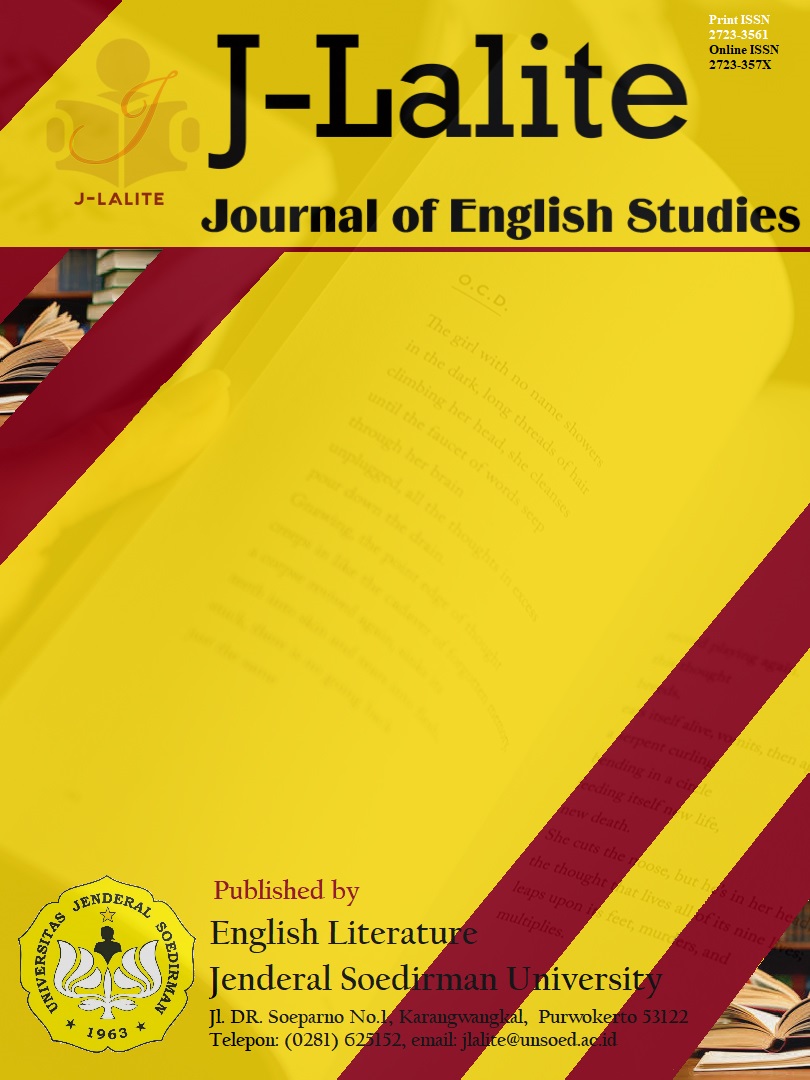Ethnography Study about Fanaticism of “Figure Purwokerto” Community's Members
Abstract
This research is aimed to figuring out the fanaticism from the members of an action figure community in Purwokerto called “Figure Purwokerto”. “Figure Purwokerto” community is an action figure community located in Purwokerto, Central Java, Indonesia. The total of the member is about 241 people from different age and culture. The researchers use focus group discussion and interview as the method to gain the information that the researcher needed for research purposes. The researchers applies some theories in order to obtain further analysis related to the issue. Fanaticism theory is used to figure out the fanaticism of “Figure Purwokerto” community’s members. Another theory, the Cultural Studies: Cultural Consumption Research, is added to make a deeper analysis about the consumption of culture from the members of the community. The scope of this research is cultural studies under the umbrella of English Studies which relates to American culture and supremacy with action figure as the media. Furthermore, the disscussion of this study is divided into two main parts which correspondent with the fanaticism happened in Figure Purwokerto community. The first part explains the portrayal of the fanaticism from the members of the community. The characteristics of a person can be said as a fanatics are included in this part. The second part explains the cultural relation between the members and the action figure as a culture. The result of this research concludes that the members are fanatic based on several aspects and characteristics of a fanatic. This research was also conducted to make another prespective of fanaticism which is seen as a bad term due to it’s relation to religion fanaticism.
References
Douglas, M., & Isherwood, B. (2021). The world of goods. Routledge.
Hagiu, Andrei, and Robin S. Lee. (2011). Exclusivity and control. Journal of Economics & Management Strategy, 20(3), 679-708.
Meyer, Anneke. (2008). Investigating cultural consumers. Research methods for cultural studies 68.
Passmore, J. (2003). Fanaticism, Toleration and Philosophy. Journal of Political Philosophy. https://doi.org/10.1111/1467-9760.00175
Pickering, M. (Ed.). (2008). Research methods for cultural studies. Edinburgh University Press.
Redden, J., & Steiner, C. J. (2000). Fanatical consumers: Towards a framework for research. Journal of Consumer Marketing. https://doi.org/10.1108/07363760010335349
Rudin, J. (1969). Fanaticism; a psychological analysis. University of Notre Dame Press.
Taylor, M. (1991). The fanatics: A behavioural approach to political violence. Sydney, Australia: Brassey's.
Thorne, Scott & Bruner, Gordon. (2006). An exploratory investigation of the characteristics of consumer fanaticism. Qualitative Market Research: An International Journal. 9. 51-72. 10.1108/13522750610640558.
By submitting the manuscript, the author(s) agreed to these following terms:
(1) The copyright of received articles shall be assigned to J-Lalite: Journal of English Studies as the publisher of the journal. The intended copyright includes the right to publish articles in various forms (including reprint). J-Lalite: Journal of English Studies maintain the publishing rights to the published articles.
(2) Author(s) are permitted to disseminate published articles by sharing the link/DOI of the article at J-Lalite: Journal of English Studies. Author(s) are allowed to use their articles for any legal purposes deemed necessary without written permission from J-Lalite: Journal of English Studies with an acknowledgement of initial publication to this journal.
(3) Authors should sign a copyright transfer agreement when they have approved the final proofs sent by J-Lalite: Journal of English Studies prior to the publication.
(4) User/public use of this website will be licensed to Creative Commons Attribution-ShareALike 4.0 International (CC BY-SA 4.0) License.







.png)
.png)
.png)
.png)




